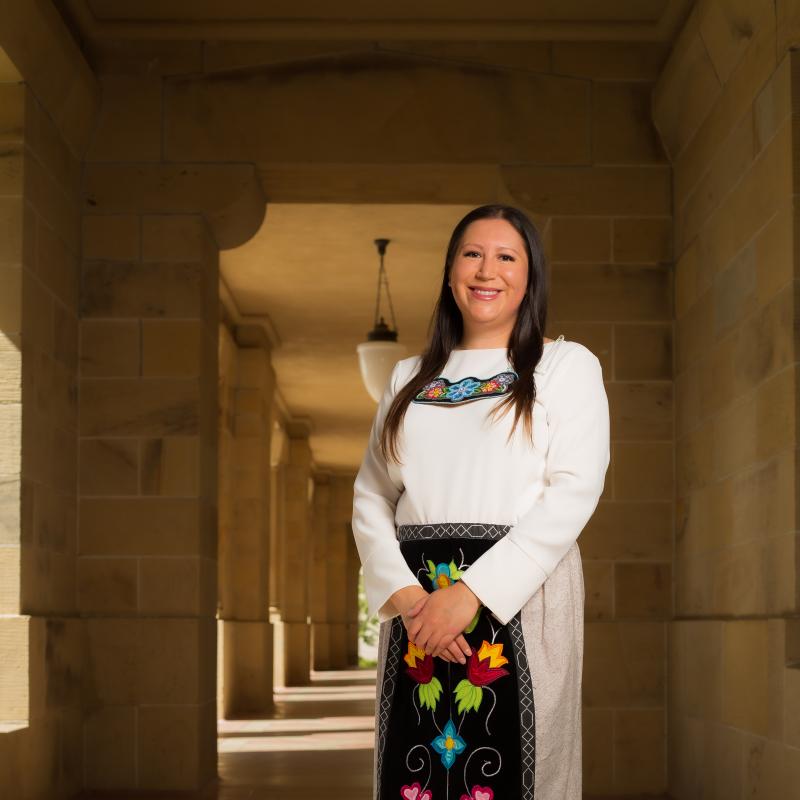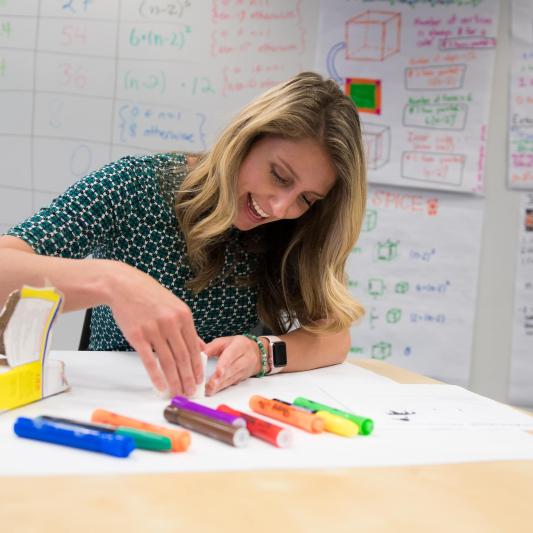
Jarita Greyeyes
In academic circles, Jarita Greyeyes introduces herself first in the language of her ancestors, a nation that has lived for millennia in what is today the Canadian plains.
Jarita Greyeyes nisiyihkāson. niya nēhiyaw iskwēw. maskēko sahkikanihk ochi niya. (“… I am a Cree woman of the Muskeg Lake Cree Nation.”)
Greyeyes says there is power in her language. She is saying, essentially: We are still here.
“School is not a neutral place for Indigenous people,” says Greyeyes, a doctoral student in the GSE’s program in race, inequality, and language in education. “It has been used as a tool of assimilation. It has used abusive tactics to separate children from their families and their culture.”
In Canada, starting in the 1880s, more than 150,000 Indigenous children were sent to residential schools that were often run by the Catholic church. There, they were to be assimilated into Western culture and were forbidden from speaking their Indigenous languages. Thousands died of malnutrition, disease, abuse, and neglect; sometimes families were never notified. All but one of Greyeyes’ grandparents were survivors of these schools.
Her research focuses on the process of indigenization, specifically how Indigenous practices are incorporated into educational systems. For her, it means asking over and over: “How do we transform this institution to reflect Indigenous peoples’ languages, histories, worldviews, governing structures, and ways of doing things?”
Before enrolling at Stanford, Greyeyes served as the acting associate vice president of Indigenous affairs at the University of Winnipeg. There she grappled with how best to elevate what indigenization means in higher education—and how to make Native youth feel at home in a setting that historically harmed them.
Pursuing her doctorate has been lonely, she confesses; fewer than 1 percent of graduate students at Stanford identify as Native. But this has inspired her to double down on her commitment. “We need a critical mass of Indigenous people in the academy. That only happens when you have the mentorship of other Indigenous people.”
Photo by Carla Hernández Ramírez;
ribbon skirt with Anishnaabe florals designed by Shannon Gustafson



